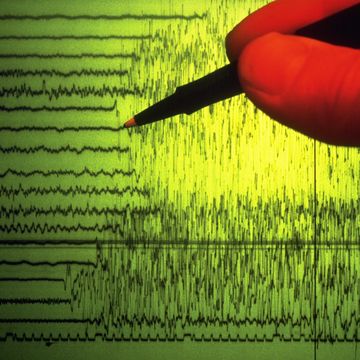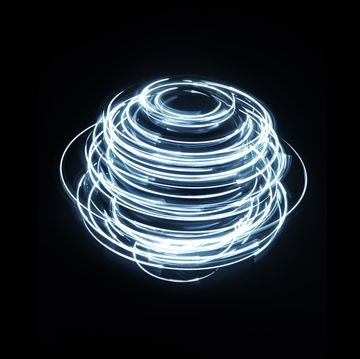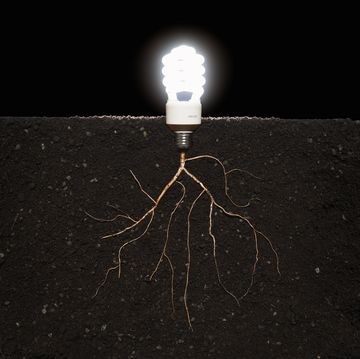When Hefty and Glad plastic bags were introduced in the 1960s, people didn't quite know what to do with them. In New York, people put trash straight into the can and out to the curb until 1969, when mayor John Lindsay asked residents to forgo the noisy, smelly metal can and start putting their garbage into disposable bags. The pilot project was a big success, and plastic garbage bags replaced metal trash cans all across the country.
This shift to plastic bags was the biggest thing that has happened in trash collection in decades, freight transportation expert Benjamin Miller said in a presentation on Tuesday night in New York. "Nothing has changed much in the past 100 years except the containers we use and the vehicles that pick it up."
But Miller and his colleague, architect Juliette Spertus, think there's a better way to take out the trash: by using networks of underground tubes. Pneumatically powered tubes are a staple of goofy sci-fi seen moving people around on The Jetsons or in the New New York of Futurama. But they're currently used at locations in 30 countries, including two sites in the United States—at Disney World in Florida and on Roosevelt Island in New York City. Now Miller and Spertus are using a grant from New York State to investigate the feasibility of using pneumatic tubes to suction garbage from a few other areas of New York.
How It Works
The city installed the Roosevelt Island system back in 1975. It works like this: Residents throw garbage down a chute. When the valve at the bottom of the chute is closed, trash can accumulate there. When it's opened, the trash empties into a 20-inch-diameter steel pipe. That pipe is connected to a series of other pipes that eventually lead to the rubbish's destination.
Inside the facility, at the end of the pipes, air turbines spin backwards, to suck air—and garbage—from the tubes and toward the plant at a rate of over 50 miles per hour. When the garbage arrives, a cyclone separator removes the air, filters it, and releases it to the environment, while the trash drops into a container. Trucks or trains then pick up all the island's residential trash at one stop and deliver it to a landfill.
The Roosevelt Island system can't carry everything. Large items like furniture and construction waste must be dealt with separately; glass must be collected separately, too, so it doesn't break apart and send shards flying through the tubes. Otherwise, though, the system collects all the waste from each of the 12,000 Roosevelt Island residents, processing about 5.8 tons per day. The 37-year-old system costs about $2.3 million per year to operate, but Miller and Spertus say those costs could be cut drastically by a mechanical upgrade—currently the plant relies almost completely on the original machinery.
Based on the Roosevelt Island success, Miller and Spertus are looking into installing a similar system at the High Line Park in Manhattan. Because the park is built on an old elevated railroad bed, the researchers say they could attach piping to the underside of the train tracks, with inlets (fancy trash cans that empty into the piping system) placed throughout the park. This above-ground installation would be easier and cheaper to build than an underground system.
Miller and Spertus say that if their study shows pneumatic trash collection is feasible for the High Line Park area, they'll seek funding to install a system that gathers between 10 and 18 tons of trash per day. The park itself generates about 1.25 tons of trash each day, but the researchers hope neighboring businesses and residences will be interested in participating. If so, builders could install chutes within new developments or retrofit older buildings with piping connections in the basements or windows.
The researchers say they have already scoped out several possible locations to build a terminal plant that would process the garbage and act as a pickup point for trains and trucks. New York mayor Mike Bloomberg has expressed support for the project, but so far neither the city nor High Line Park has made a definite commitment.
Smart Garbage
A new trash tube system like that proposed for the High Line would be more efficient and sophisticated than the '70s-era tubes still at work on Roosevelt Island. Smaller exhaust blowers equipped with frequency drivers—which reduce fan speed—could cut energy consumption by up to 35 percent, says Albert Mateu, a spokesman for Envac, the company that built the Roosevelt Island tubes. In addition, newer systems are computerized, which cuts labor costs and allows for sensors that can tell an operator how much waste is accumulating at each inlet. Downsized cyclones, compactors, and waste containers mean that new terminals can collect double the waste of older facilities, but in half the space.
Modern trash tubes can also separate the recycling from the trash. Simply, residents sort the recyclables from the garbage, just as they do for ordinary waste disposal. The kind of pneumatic system that would go on the High Line would include separate inlets for different kinds of waste. When an operator wishes to collect recyclables, he or she could switch open the valves to recycling inlets while keeping the garbage valves closed—the garbage would stay in its receptacles while recyclables fly through the tubes. Miller and Spertus say they could even include a separate inlet for organic waste. If so, they could build an anaerobic digester into the terminal facility to extract methane from the food waste, while creating compost at the same time.
Money Down the Drain?
Miller says pneumatic tubes would significantly reduce the cost per ton of waste disposal—but not overnight. Rosina Abramson, a representative for Envac, says it typically costs $2 million to $3 million to build a terminal facility, and more for the piping and tubes. The High Line pilot system might cost upwards of $10 million, Miller says, with the money probably coming from some kind of public–private partnership.
The energy savings would allow the system to eventually pay for itself, Miller says. But to Vishaan Chakrabarti, a Columbia University professor and former city-planning advisor for the Bloomberg administration, the reality of building these futuristic trash transporters comes down to cost and scale. "The upfront cost is the most significant question," he says. "The price is contingent upon density—probably this is not a viable solution for single-family homes in the suburbs."
In a separate study, Envac is now investigating whether it could feasibly install trash-collecting tubes along the Coney Island Boardwalk in Brooklyn. Miller said that if the High Line Park tubes are installed and operate successfully, pneumatic systems could be incorporated into new housing developments, the Harlem 125th Street viaduct and other parts of the city, possibly using space in subway tunnels. Eventually these separate systems could be interconnected. "This could be Glad bags," Miller said. "If we can get this system in here [in New York City], I think there will be copycats all over the country."
Indeed, New York City is not alone in beginning to consider new pneumatic systems as alternatives to traditional trash collection. Carmel, Ind., is currently building trash tubes for a 1-million-square-foot downtown center, and Montreal recently decided to retrofit one of its districts with the underground tubes.
Any city that wants to install a pneumatic system has to make sure the dollars and cents add up for them. Miller and Spertus, though, say it's a no-brainer, especially for the largest cities. New York City alone creates as much as 40,000 tons of trash every day; the 6000 garbage trucks that collect it generate nearly 2 tons of greenhouse gases every year and, according to Miller's estimates, New York City paid approximately $90 to dispose of 1 ton of waste in 2008, up from $65 per ton in 2003. "Garbage trucks in the city get 3 miles to the gallon," Spertus said. "It doesn't take much to be more efficient than that."













